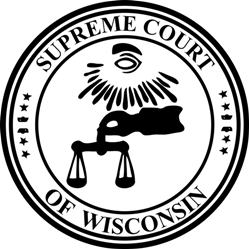Will Susan Crawford Continue Women’s Dominance in Wisconsin Supreme Court Elections?
Seventeen of the last 22 women nominees for the state’s high court have been elected
 On next Tuesday all eyes will be on the highly anticipated matchup to determine the ideological tilt of the Wisconsin Supreme Court.
On next Tuesday all eyes will be on the highly anticipated matchup to determine the ideological tilt of the Wisconsin Supreme Court.
The historically expensive race pits liberal-backed Dane County Circuit Court Judge Susan Crawford against Waukesha County Circuit Court Judge and former Republican state Attorney General Brad Schimel.
A win by Judge Crawford would not only retain the 4-3 liberal majority on the court but also the six seats held by women justices as liberal Justice Ann Bradley retires from the bench this summer.
Shirley Abrahamson was the first woman to serve on the Wisconsin Supreme Court – appointed to the bench in 1976 by Governor Patrick Lucey and subsequently elected in her own right to the first of four full 10-year terms in 1979.
It took nearly a generation for another woman to follow suit, but since the mid-1990s women nominees have performed extraordinarily well at the ballot box for the office.
Since Abrahamson’s first victory in 1979, 17 of 22 women nominees won election to the bench, or 77.3 percent:
- Shirley Abrahamson in 1979, 1989, 1999, and 2009
- Janine Geske in 1994
- Ann Bradley in 1995, 2005, and 2015
- Diane Sykes in 2000
- Pat Roggensack in 2003 and 2013
- Annette Ziegler in 2007 and 2017
- Rebecca Bradley in 2016
- Rebecca Dallet in 2018
- Jill Karofsky in 2020
- Janet Protasiewicz in 2023
Of the five women who were defeated, three fell to fellow women nominees:
- 1999: Green Bay lawyer Sharren Rose was defeated by Justice Abrahamson
- 2007: Madison attorney Linda Clifford lost an open seat to Ziegler
- 2016: Wisconsin Court of Appeals Judge JoAnne Kloppenburg lost a competitive race to Justice Rebecca Bradley
The only other two instances in which women nominees lost general election bids were extremely tight races (among the Top Five closest for the office in state history):
- 2011: Kloppenburg (then an assistant Wisconsin Attorney General) lost to Justice David Prosser by 0.5 points
- 2019: Wisconsin Court of Appeals Judge Lisa Neubauer lost to fellow Appeals Court Judge Brian Hagedorn by 0.5 points
It should be noted that three other women ran for seats on the Wisconsin Supreme Court but were defeated in the primary:
- 1995: Roggensack, then a Madison attorney, placed fourth in a five-candidate field
- 2011: Shorewood resident and State Public Defender Appellate Division director Marla Stephens finished third in a four-candidate field
- 2023: Waukesha County Judge Jennifer Dorow placed third in a four-candidate field
But will the state’s Supreme Court contest be competitive on Tuesday?
Since 2009, 25 of the 27 statewide partisan elections in Wisconsin have been decided by single digits (all but the wins by Attorney General J.B. Van Hollen in 2010 and U.S. Senator Tammy Baldwin in 2018).
However, only three of Wisconsin’s 14 statewide nonpartisan elections have been decided by less than 10 points: none of the four elections for Superintendent of Public Instruction and just the three aforementioned Supreme Court races in 2011, 2016, and 2019.
Follow Smart Politics on X.

6 days WI VOTE like your lives depend on it.
I think Wisconsinites are expecting a Crawford victory today. How close will Brittany Kinser, not as aligned with the GOP, get to unseating the Superintendent of Public Instruction? That could be the tighter race.
– The WISC election in *2019* was close; the *2023* election was not.
– Should Judge Crawford win, the Centre & Left forces in the Badger State could ‘breathe easy’, at least a little; even if they were to lose the WISC election in ’26 and ’27, the anti-right-wing majority would remain intact (4 to 3).
– (Correct me if I am in error) The 2025 election marks the first occasion since the so-called era of conservative court domination (08 of 2008 ~ 07 of 2023) that a WISC justice of a particular judicial/political leaning is succeeded by one of similar leaning (in contrast to, say, 2023 and 2020 and 2018 – all of which had gone from *right to left/centre-left*).
– By comparison, the spending on this single, non-national/federal election exceeded that of the total spending for the entire UK parliamentary election in 2019 (or perhaps even 2024; its figures are not yet available) !
– What is the likelihood that the total expenditure for the 2027 – and for that matter, 2026 – election will surpass or match the ’25 election, which has well exceeded $90M, even though control of the body will not be at stake?
– ‘…any pretense of nonpartisanship ended with the 2023 campaign…’ (paraphrase; per Crystal Ball, based in Charlottesville) I disagree with the aforementioned premise, at least somewhat; until the ’23 election, that court arguably had become an extension of the state Republicans since August 2008 – which preceded the takeover by the party of both assembly and senate in the wake of the 2010 elections.
– Wonder if the Supreme Court of MN is similarly rife with (de facto) partisan politics? (They are chosen by election, rather than subject to a ‘yea-or-nay retention vote’, if I am not mistaken?)